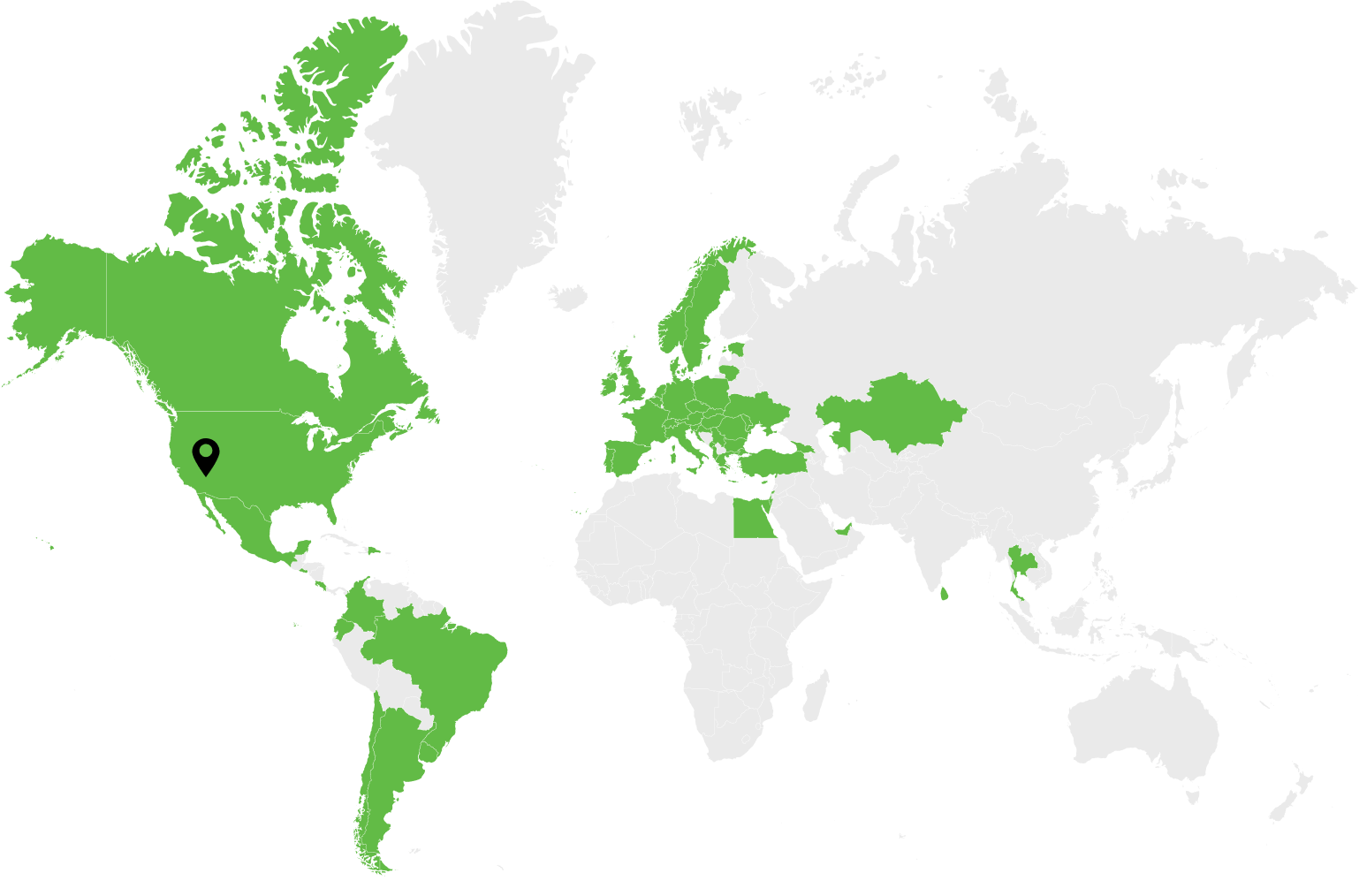There is no denying that artificial intelligence (AI) is one of the most disruptive new technologies since the internet. After OpenAI launched ChatGPT in 2022, AI swept across the globe and has forever altered how business is conducted. Studies show that the global AI market will reach $1.68 trillion by 2031.
Automation is entering a new era with the rise of AI. Technologies like robotic process automation (RPA), which were once limited to rigid, rule-based scripts, have evolved into intelligent, adaptive systems. Today’s smart automation goes beyond basic triggers and task repetition, enabling context-aware decision-making and continuous self-optimization.
In this article, Dev.Pro investigates how AI automation is being utilized to evolve the fintech, retail, and restaurant sectors.
FinTech: Streamlining Operations and Strengthening Compliance
AI-driven automation is reshaping the ways fintech companies manage risk, serve customers, and scale operations.
Automated Fraud Detection
Since AI automation can analyze vast amounts of data instantaneously, it’s become an essential tool for fraud detection in fintech. AI models have helped companies like American Express improve fraud detection accuracy by 6%, while PayPal has achieved a 10% boost in real-time fraud prevention.
Fintech providers are training AI models to detect fraudulent activity in 2 key ways:
- Supervised learning
- Unsupervised learning
As IBM explains, the supervised learning “method teaches the [AI] model to recognize specific patterns for specific tasks. In contrast, unsupervised learning allows AI systems to draw conclusions from previous data without directed training materials.” By combining both, fintechs build AI automation that detects known fraud patterns and uncovers novel threats as they occur.
Intelligent Customer Onboarding and KYC
AI automation improves the speed and accuracy of customer onboarding and know your customer (KYC) regulations in fintech. As AI becomes widely used and accepted in regulated industries like fintech, increasing numbers of compliance professionals are seeing the immense value of the technology.
The most popular applications of AI automation for customer onboarding and KYC include biometric matching, identity verification, transaction monitoring, document analysis, and risk-based customer profiling. To illustrate, AI automation quickly verifies user identities through biometric data or ID scans, ensuring individuals are who they claim to be. Similarly, automated document analysis can quickly review licenses and financial records to detect inconsistencies.
Retail: Personalization and Supply Chain Optimization
In the retail industry, where customer expectations and market conditions shift by the minute, AI automation delivers hyper-personalized experiences while also optimizing inventory and pricing across channels.
Inventory Forecasting
By applying machine learning (ML) algorithms to analyze historical sales, market trends, and seasonal data, businesses can predict demand with exceptional accuracy. Old inventory forecasting methods often miss the mark, resulting in costly overstocking or stockouts that tie up capital and hurt sales. Studies report that inventory distortion caused by out-of-stocks and overstocks cost US retailers $1.77 trillion in 2023 alone.
With the implementation of AI automation, modern retailers have reduced inventory-carrying costs by 15-25% and have prevented roughly 65% of stockouts. For an ecommerce business generating $1 million in annual sales, this could translate to yearly savings of $150,000–$250,000 through optimized inventory and reduced losses. Over 5 years, those savings could exceed an astounding $1 million.
Intelligent Product Recommendations
Thanks to advancements in AI automation, online shopping now rivals in-person experiences with personalized service, product recommendations, and product engagement. For example, Sephora’s AI-powered beauty advisor suggests products based on skin tone, preferences, and previous purchases — creating a highly personalized makeup shopping experience unimaginable just a few years ago.
Guided discovery is an AI-powered search technology that enhances the online shopping experience by analyzing a shopper’s search patterns, clicks, and browsing behavior to anticipate needs. For example, a customer shopping for running shoes might start with a broad search. As they browse, AI detects their preference for trail shoes and surfaces the right models and sizes without additional input — creating a frictionless experience that boosts conversion rates.
Restaurant: Efficiency from Kitchen to Customer
In the restaurant industry, where margins are thin and customer satisfaction is everything, AI automation is helping operators boost efficiency and deliver quality guest experiences.
Smart Order Automation
The COVID-19 pandemic pushed ordering automation to the forefront of the hospitality space. While operators initially adopted technologies like self-serve kiosks out of necessity, AI automation is now pushing restaurants into new frontiers of efficiency and customer satisfaction. Tools like mobile apps and intelligent voice systems reduce wait times, minimize human error, and reduce labor costs in restaurants.
A strong example of AI ordering automation driving results comes from New York-based restaurant chain Shake Shack. According to company reports, after implementing automated ordering kiosks, same-store sales rose 1.6% YoY for Q1 2024, a 14.7% increase over Q1 2023. As this momentum shows, AI automation isn’t just about optimizing individual tasks; it’s redefining how restaurants deliver customer satisfaction and boost revenue at scale.
Sentiment Analysis
AI-powered sentiment analysis is helping restaurants better understand and respond to customer feedback. By using ML models to analyze reviews, social media posts, and surveys, these tools reveal how guests truly feel about their dining experiences.
Sentiment analysis systems categorize feedback into 3 types:
- Positive sentiment: Satisfaction with food, service, or atmosphere
- Negative sentiment: Complaints and pain points that need improvement
- Neutral sentiment: Feedback without clear praise or criticism
By continuously monitoring sentiment analysis with AI, restaurants can easily identify trends, resolve issues, and enhance guest experiences. In fact, research shows that when customer concerns are addressed proactively, 70% of dissatisfied guests are willing to return to a restaurant. Ultimately, it’s about transforming raw data into actionable intelligence to improve service.
Summary
According to a McKinsey survey, more than 75% of companies with over $500 million in revenue now use AI in at least one business operation. Just as automation revolutionized manufacturing during the industrial revolution, AI is shifting automation into a new phase with the fintech, retail, and restaurant industries. Today’s smart automation goes beyond basic triggers and task repetition and into the novel realms of context-aware decision-making.
Since AI automation can now make judgments, rather than just execute instructions, the sky is the limit. Whether it be ML models detecting fraudulent patterns in fintech or NLP interpreting unstructured chat data to help retailers deliver personalized experiences, AI automation is here to stay. For most companies, the question isn’t if they’ll adopt this technology—but rather when.
Turn AI Automation into a Competitive Advantage
From fintech to hospitality, AI doesn’t just make automation faster — it makes it smarter. Dev.Pro helps clients transform manual, time-consuming processes into intelligent automations that learn, adapt, and scale — so your organization can grow along with this powerful technology.
Don’t let knowledge gaps with AI automation keep you from utlizing these tools. Outsourcing and outstaffing services from Dev.Pro will help you meet AI digital transformation goals, no matter how ambitious. Contact us to schedule an introductory call.

